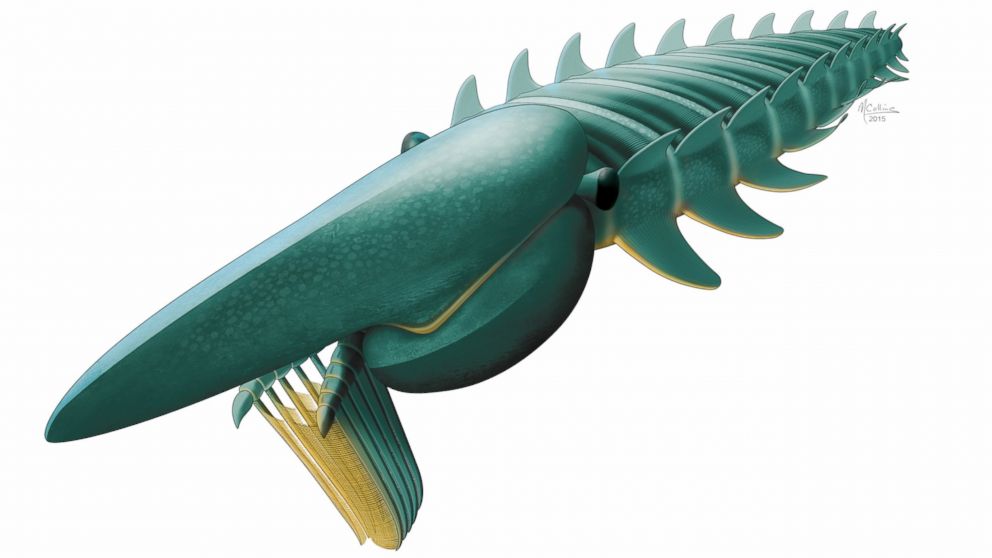Scientists Discover Human-Sized Lobster That Lived Half-a-Billion Years Ago
A fossil found in Morocco sheds new light on the mysterious creature.

— -- Scientists have discovered a human-sized lobster relative that lived half-a-billion years ago, shedding new light on how crustaceans, spiders and insects evolved over time.
The well-preserved fossilized remains of one of the beastly creatures was found in Morocco and studied by scientists from Oxford and Yale Universities who published their findings in the journal "Nature."
Stretching nearly two meters long, the giant lobster-like species, named Aegirocassis benmoulae used its spine-covered limbs to scrape food from the ocean floor.
"These animals are filling an ecological role that hadn't previously been filled by any other animal," Allison Daley a co-author of the study and a professor at Oxford University’s Department of Zoology, said in a statement.
"While filter feeding (filtering water to find food) is probably one of the oldest ways for animals to find food, previous filter feeders were smaller, and usually attached to the sea-floor," she said. "We have found the oldest example of gigantism in a freely swimming filter feeder."
The species also has pairs of swimming flaps on both sides of its body, something scientist said was likely a precursor to the double-branched legs seen today on related arthropods, such as spiders.
The lobster-like animal was a member of a now-extinct family of marine arthropods called anomalocaridids, which first appeared 520 million years ago during the Cambrian era.




